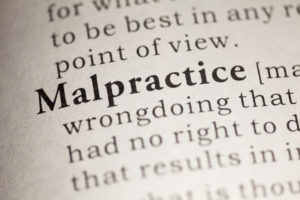There was a recent article in the local newspaper concerning Norfolk Southern Railway Company conducting a special train ride carrying one hundred people in two passenger cars behind a locomotive, to help these people understand rail safety and the dangers of railroad crossings. However, Norfolk Southern Railway Company and “Operation Lifesaver”, a non-profit group, have been accused of trying to influence the same police and legislative representatives that all railroad crossing accidents must be caused by motorists and not railroads. Is it about safety, influence, or a little bit of both?
This reminds me of the recent news stories about the pharmaceutical rep’s buying lunch for a doctor’s practice once a week and providing some literature about their medication. Makes you wonder…
One of the mantras of Operation Lifesaver and the railroad company is that the motorist is virtually always at fault at a crossing accident. What the newspaper article did not talk about when it warned about crazy motorist going around warning gates, is that many of the railroad crossing collisions are not caused by a crazy motorist going around a railroad crossing gate or failing to watch out for a train. Many railroad crossing accidents happen when the railroads have failed to properly evaluate a railroad crossing and failed to post any lights or gates at the crossing with known prior accident histories.
Most consumers have no idea that the railroad rarely pays for the lights or gates that are at a typical public railroad/highway grade crossing. Believe it or not, your friendly federal and state governments usually pay for nearly all of the costs for crossing lights or gates. Usually, the railroads merely have to agree to have their existing railroad employees maintain and keep up the expensive equipment once it is installed with taxpayer dollars.
What about crossings that have had several accidents and that the railroad still refuses to do anything about? If a motorist gets killed in a fiery crash with a train with no opportunity to stop as the train approaches, is it always the motorist’s fault as Operation Lifesaver tends to tell these police and legislators?
Our firm has practiced railroad injury law for many years and we can tell you conclusively that drivers that get killed at private and public railroad crossings do not intend to die. They are not trying to commit suicide. Many of them, based on witness testimony, have no idea the train is coming until it is too late and the accident is inevitable. These people did not go around the gates or ignore the lights! These people approached a railroad crossing and had no idea a train was coming because there were no advance warning signs or flashing lights or gates.
As a matter of fact, I have written several blog articles about the fact that the railroads were urging states to post stop signs at many private crossings (private crossings are simply crossings where the road is not yet dedicated or owned by the city or county). A major study found that the addition of stop signs at crossings was actually making them more dangerous and causing more accidents! The railroads nationwide are still generally promoting stop signs at crossings even though no statistics show they improve safety. But they sure are cheap, and then the railroad can find “cover” and blame the motorist every time. Please see other articles on this blog that discuss stop signs at crossings. I even wrote to the reporter, who wrote the story covering this recent Norfolk Southern “safety train ride”, to make him aware about the dangers of stop signs and how we need to focus more on getting appropriate warnings at crossings, not just on blaming the motorists.

Rick Shapiro has practiced personal injury law for over 30 years in Virginia, North Carolina, and throughout the Southeastern United States. He is a Board-Certified Civil Trial Advocate by the National Board of Trial Advocacy (ABA Accredited) and has litigated injury cases throughout the eastern United States, including wrongful death, trucking, faulty products, railroad, and medical negligence claims. During his three-decade career, Shapiro has won client appeals before the VA Supreme Court, VA Court of Appeals, NC Supreme Court, SC Supreme Court, WV Supreme Court, TN Supreme Court, and three times before the United States Court of Appeals for the Fourth Circuit, underscoring Shapiro’s trial achievements. In addition, he and his law firm have won settlements/verdicts in excess of $100 million. His success in and out of the courtroom is a big reason why he was named 2019 “Lawyer of the Year” in railroad law in U.S. News & World Report's Best Lawyers publication (Norfolk, VA area), and he has been named a “Best Lawyer” and “Super Lawyer” by those peer-reviewed organizations for multiple years. Rick was also named a “Leader in the Law, Class of 2022” by Virginia Lawyers Weekly (total of 33 statewide honorees consisting of lawyers and judges across Virginia). And in September 2023, Rick was selected as a recipient of the National Board of Trial Advocacy (NBTA) 2023 President’s Award. Although many nominations were submitted from across the country, Rick was just one of eight attorneys chosen by the prestigious National Board which certifies civil trial attorneys across the U.S. Rick was also recently named to Virginia Lawyers Weekly 2024 Virginia’s Go To Lawyers Medical Malpractice. The attorneys awarded this honor are nominated by their colleagues and chosen by a panel from the publication.










Comments for this article are closed.